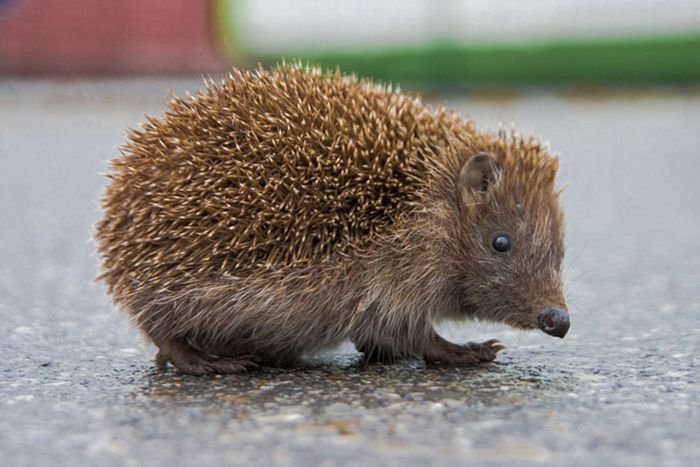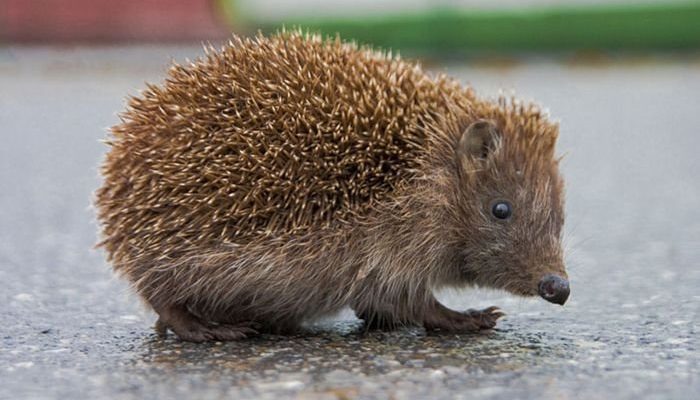
Imagine sitting at a café, sipping your coffee, and chatting about why hedgehogs curl up into little prickly balls. Maybe you’re wondering what those sounds mean when they squeak or grunt. That’s normal! Hedgehogs express themselves in ways that can be quite surprising. Just like you have your own set of gestures and noises that signal how you feel, hedgehogs have their own unique ways of communicating and navigating the world around them.
In this article, we’ll dive deep into various aspects of hedgehog behavior, from their intriguing noises to their curling habits and exploring tendencies. Let’s get started!
Understanding Hedgehog Noises
Hedgehogs are not just quiet little pets; they can be quite vocal! You might be wondering what those sounds mean. Here’s the thing: hedgehogs make a variety of noises, and each one can indicate something different.
For instance, if your hedgehog is making a snuffling or grunting sound, it’s often a sign that they are content or curious. It’s their way of saying, “Hey, I’m here, and I’m interested in what’s going on!” On the other hand, if you hear high-pitched squeaks, it could mean they’re feeling scared or threatened. It’s their version of saying “Yikes!” to whatever is causing them stress.
Observing these noises can give you valuable insights into how your hedgehog is feeling. If you notice that they’re growling or hissing, it’s usually time to give them some space. Hedgehogs have their own personalities, just like you and me, and understanding their vocalizations can help you create a better environment for them.
Common Hedgehog Sounds
Let’s break down some common hedgehog noises:
- Grunts: Often a sign of contentment.
- Squeaks: May indicate discomfort or stress.
- Hissing: A warning that they feel threatened.
- Chirping or Purring: Signs of happiness or excitement, especially if they’re playing.
Recognizing these sounds can help you respond appropriately and ensure your hedgehog feels safe and happy in their environment.
Why Do Hedgehogs Curl Up?
If you’ve ever noticed a hedgehog curling into a tight ball, it might seem a bit odd at first. But curling up is a natural defense mechanism! When hedgehogs feel threatened, their first instinct is to protect themselves. Just like you might instinctively shield your face in an uncomfortable situation, hedgehogs roll up to hide their vulnerable parts, tucking their heads and feet inside.
This behavior is typically their way of saying, “I’m scared! Leave me alone!” It’s an instinct that has kept them safe from predators for ages. Understanding this behavior is crucial, especially if you have a hedgehog as a pet. You want to make sure they have a safe and calm environment, reducing stressors that might cause them to curl up too often.
When Curling Is a Good Thing
Interestingly enough, curling up isn’t always a signal of fear. Sometimes, hedgehogs curl up because they feel comfortable and are getting ready for a nap. Imagine how you might curl up in a blanket when you’re cozying up for a movie night! When they feel safe and secure, you might see them curling up in their favorite sleeping spot.
So, when you see your hedgehog curling up, take a moment to assess the situation. Are there loud noises or unfamiliar animals around? Or is it just naptime? Knowing the difference can help you create a peaceful environment for your little friend.
Exploring Their Environment
Hedgehogs are natural explorers. They love to sniff around and investigate their surroundings, which is part of what makes them so charming. Like tiny, furry adventurers, they use their paws and little noses to explore everything in their environment.
When you provide a suitable enclosure and some safe things to explore, you encourage healthy behaviors. This includes not only physical exercise but also mental stimulation. Think about it: if you stayed in one spot all day, you’d probably get a little bored too!
Providing enrichment is key. You can include various toys, tunnels, or even some soft bedding they can dig into. It not only keeps them entertained but also satisfies that natural curiosity hedgehogs exhibit.
Create a Hedgehog Playground
Here are some tips for making an engaging environment for your hedgehog:
- Tunnels: Add small tunnels for them to explore.
- Hiding Spots: Use boxes or hideaways where they can feel secure while exploring.
- Toys: Introduce chew toys or balls to encourage play.
- Different Substrates: Provide various textures for them to dig and explore.
By making their space dynamic and intriguing, you’ll help your hedgehog thrive, both physically and mentally.
The Importance of Socialization
Like many animals, hedgehogs benefit from social interaction, but they don’t all seek it in the same way. Some may enjoy gentle handling, while others prefer observing from a distance. It’s essential to understand your hedgehog’s individual personality and comfort level.
When you first bring your hedgehog home, it’s wise to let them settle in without too much interference. After a few days, you can start to slowly introduce handling. This is key because, just like people, some hedgehogs have shy personalities.
Offering them treats during bonding sessions can help them associate your presence with positive experiences. It’s a delightful way to build a trusting relationship!
Building Trust
Here are some tips for socializing with your hedgehog:
- Be Gentle: Always approach your hedgehog slowly and quietly.
- Use Treats: Offer small treats to encourage them to come to you.
- Read Their Signs: Pay attention to their body language and sounds to gauge their comfort level.
- Short Sessions: Keep interactions brief at first, gradually extending as they get comfortable.
Remember, every hedgehog is unique. With patience and kindness, you’ll find your rhythm and create a wonderful bond.
Hedgehug behavior might seem strange at first, but once you dive into their world, it becomes a captivating journey. Understanding their noises, their natural instinct to curl up, and their adventurous spirit can help you appreciate these little creatures even more.
Whether it’s the delightful sounds they make, their curling habits as a defense mechanism, or their curiosity that leads to exploration, each aspect tells a story about who they are. As a hedgehog owner or simply an enthusiast, knowing these behaviors enriches your interaction and fosters a better understanding of their needs.
So, the next time you see a hedgehog curling up or hear them grunt, you can smile, knowing you understand their little quirks. These tiny adventurers bring joy and learning into our lives, and getting to know their behaviors is just part of the fun!

